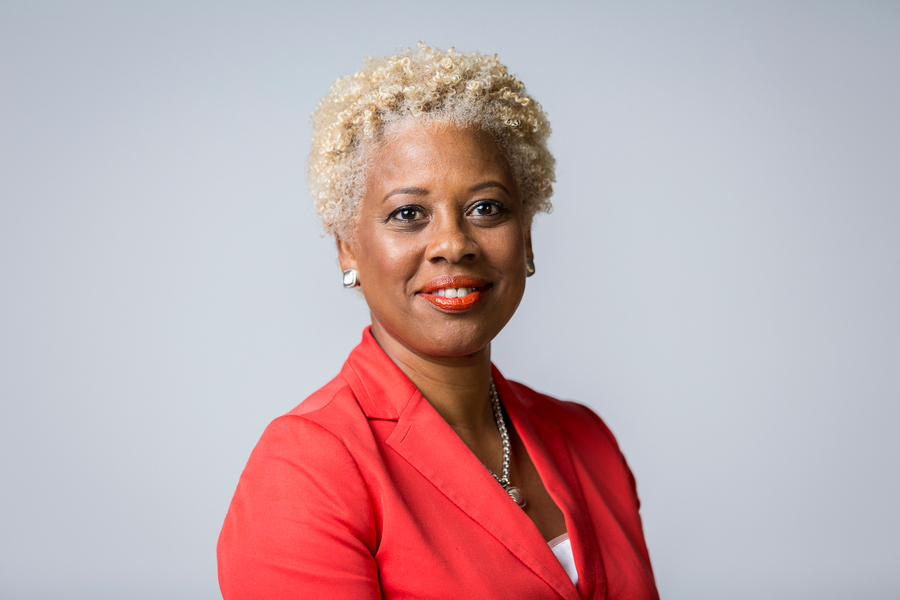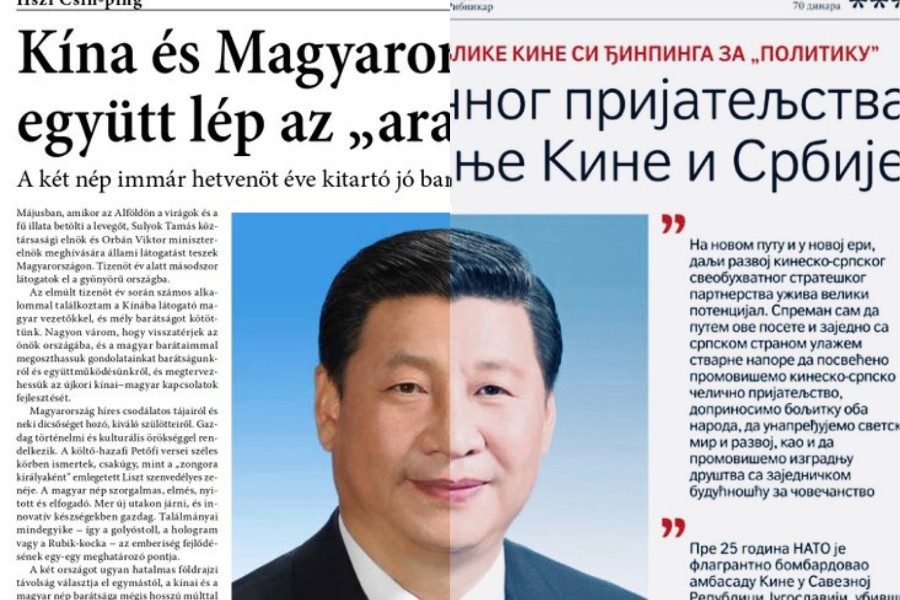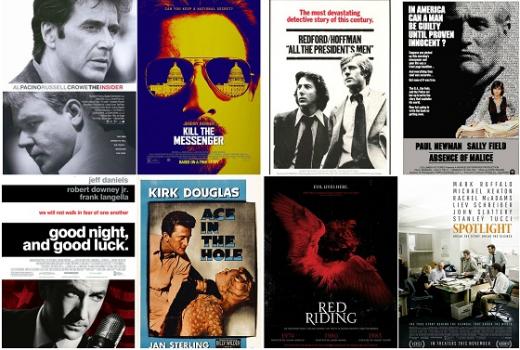
Dr. Michelle Ferrier (photo: Cenzolovka)
Dr. Michelle Ferrier is Dean of the School of Journalism & Graphic Communication at Florida Agricultural & Mechanical University in Tallahassee, Florida. She is the founder of TrollBusters.com, www.troll-busters.com, a just-in-time service that helps journalists fight online abuse. She is a digital content architect with more than 30 years of experience in new media technologies, digital identity, and media entrepreneurship.
Recipient of numerous awards, Ferrier is the former president of Journalism That Matters and the creator of the Create or Die series of startup gatherings for media innovation in underserved and underrepresented communities.
She is the principal investigator for the Media Deserts Project www.mediadeserts.com that uses geographic information system technologies to examine places in the United States where fresh news and information are lacking.
Harrasments threaten the ability of media to deliver unbiased and truly free reporting. Unfortunately, incidents of harassment – digital and physical – are taking a toll on female journalists personally as well. Nearly one-third reported experiencing physical, mental and emotional trauma following harassment.
Cenzolovka: Trollbusters, branded as „Online Pest Control for Journalists“ is a unique initiative with a very important mission. Could you tell us its origin story? If I am not mistaking, it is in relation to your personal experiences working as a journalist?
Ferirer: Yes. Back when I was working for a Florida newspaper as the first African-American columnist, I experienced hate mail and other digital attacks because of my race and gender such was „How do you get a Nigger out of a tree? Cut the rope.“ Back then, I would pull the letters I received out of sealed plastic bags with rubber gloves while standing outdoors, so as not to expose my coworkers at the newspaper to any potential toxins — and to preserve any fingerprints that might still be imprinted atop these hateful words. Only after receiving several angry letters did I finally go to the police. I called professional organizations, the Federal Bureau of Investigation (FBI), local law enforcement, and others. Usually, I got a shrug. Basically, I was told, „There’s nothing we can do“ because this letter writer hadn’t fulfilled his threats; these were just threats. Hate mail, it seemed, could not really be investigated until something happened.
I became a different person as a result of my hate mail. I became less trusting. I had always naively thought that I would be willing to die rather than have to kill someone. But as the letters continued, I became angrier. I learned to shoot a gun. I was prepared physically and mentally to defend my family and myself. Each day, I would take a different route to and from work, trying to outsmart the crazy.
There are long-term psychological impacts to the type of hate I experienced. You never forget.
When #gamergate began attacking women journalists online in August 2014, I remembered my own experiences and wanted to do something „anti-gamergate“ to help the targets of online harassment persist online.
These online trolls have used social media to swarm women journalists and thought leaders, damaging our identities, our digital reputations, and our ability to make a living.
That’s why in January 2015, I founded TrollBusters-a just-in-time rescue service for women journalists. We provide a hedge of protection around women so they can persist online and tell the story, and not become the story.
Nearly one-third of female respondents consider leaving the profession due to harassment and those early in their careers are twice as likely to consider alternate employment.
Cenzolovka: Please tell us more about the ways Trollbusters operate. Also, can it be used by journalists working outside of the U.S.?
Ferirer: The infographic we’ve created which is availble on our website, lists types of threats and ways to respond to it and it helps journalists worldwide to navigate online harassment. For example, you will find there detailed information about what to do if you are threatened on Twitter. You should always note the date of the threat, the number of people involved and the severity of the threat.
In addition, you can change your Twitter setting to ensure that you filter only things that you want to see.
Twitter also has a quality filter, to ensure that you do not see posts from people you don’t follow and have not recently interact with. Finally, you can choose to block certain users, as well as to mute specific words. The infographic, that so far has been translatedinto Spanish, Hindi and Turkish, is available here: https://yoursosteam.files.wordpress.com/2017/04/trollbusters_tabloidedit3_01_dm.jpg
Also, we offer 1:1 coaching to clients, helping them identify resources in their own country through our Global Safety Resource Hub: https://yoursosteam.wordpress.com/global-resource-hub/
Finally, we are also partnering with organizations around the globe to provide just-in-time supports to clients whose physical safety is at risk. We partner with organizations that provide legal services to our clients. We also provide courses in digital safety (in English) and direct consultation to media companies looking at how they might change their policies and procedures.
Cenzolovka: In Serbia, female journalists are commonly attacked two-folded. For their reporting, but also for being women. So, while male colleagues are often branded as “spies” or “foreign operators,” in essence, as people of influence, female journalists are very often “whores,” “old hags,” or “ugly bitches,” who should be “raped to death” etc. Would you say that this is a universal phenomenon? What are the threats that are most often reported to Trollbusters?
Ferirer: Our research published this past October 2018 with International Women’s Media Foundation reviled that nearly two-thirds out of nearly 600 female journalist respondents have been harassed, with more than half experiencing attacks within the past year.
The survey, “Attacks and Harassment: The Impact on Female Journalists and Their Reporting,” notes that nearly one-third of female respondents consider leaving the profession due to harassment and those early in their careers are twice as likely to consider alternate employment.
As the letters continued, I became angrier. I learned to shoot a gun. I was prepared physically and mentally to defend my family and myself. Each day, I would take a different route to and from work, trying to outsmart the crazy.
In addition, more than one third avoid certain stories as a result of the harassment they experience, threatening the ability of media to deliver unbiased and truly free reporting.
Unfortunately, incidents of harassment – digital and physical – are taking a toll on female journalists personally as well. Nearly one-third reported experiencing physical, mental and emotional trauma following harassment.
Online attacks, specifically, occur most often in the comments section of articles, followed by engagement on Twitter and within email. Some attackers intercept email, steal data, plant viruses, or hack into accounts; others share private or identifying information online.
Cenzolovka: You are in the business of busting trolls. Could you please tell us more about the pests? Who or what are typical trolls?
Ferirer: This is a critical distinction to make because trolls or harassers have varying motivations and tactics for targeting a journalist or even a woman journalist. Journalists may be attacked because of their gender, or because they have taken on a role traditionally reserved for men in their culture.
We’ve seen organized activity by those seeking to discredit the journalists, create hostility by calling them an ‘enemy of the state,’ discredit the media in general and attack for other reasons. The short- and long-term effects affect both the journalist and the larger news enterprise.
Cenzolovka: What are some effective ways for journalists to protect themselves on the Internet?
Ferirer: I suggest to my students that they separate their personal and private identities online. Consider using a nickname or pseudonym that masks gender and other identifiers. Also, use the pseudonyms to distance your private life from private information that in the U.S. is still available publicly.
Cenzolovka: Are you familiar with ways of working with social media platforms in addressing the harassment? Should harassed journalists contact Twitter or Facebook directly, and in your experience, how effective is that?
Ferirer: Twitter has created several channels for reporting. Same with Facebook. The first channel is through the platform itself. Usually, that is not useful or timely as that’s the door every other complaint goes through. Second is through direct relationships with media companies and designated social media managers within the organization. Still, it’s a slow process.
Cenzolovka: Serbia, as well as the countries in the region, is yet to adopt a good set of laws that would protect journalists working online. Do you have any recommendations in terms of the best practices?
Ferirer: I am working on a strategy here to provide some basic privacy protections to journalists. We do not yet have GDPR-based regulations in place here in the United States, and so journalists and their home addresses and voting records are available to the public. That information has created significant physical risk for journalists both at work and at home.








 Saragusti: Niko sada nije bezbedan. Zločini su jezivi. Novinari su ubijeni dok obavljaju svoj posao
Saragusti: Niko sada nije bezbedan. Zločini su jezivi. Novinari su ubijeni dok obavljaju svoj posao Deset medijskih sporazuma za „zajedničku budućnost” sa Kinom, zemljom cenzure i progona novinara
Deset medijskih sporazuma za „zajedničku budućnost” sa Kinom, zemljom cenzure i progona novinara Filmovi o novinarima i za novinare
Filmovi o novinarima i za novinare
Ostavljanje komentara je privremeno obustavljeno iz tehničkih razloga. Hvala na razumevanju.